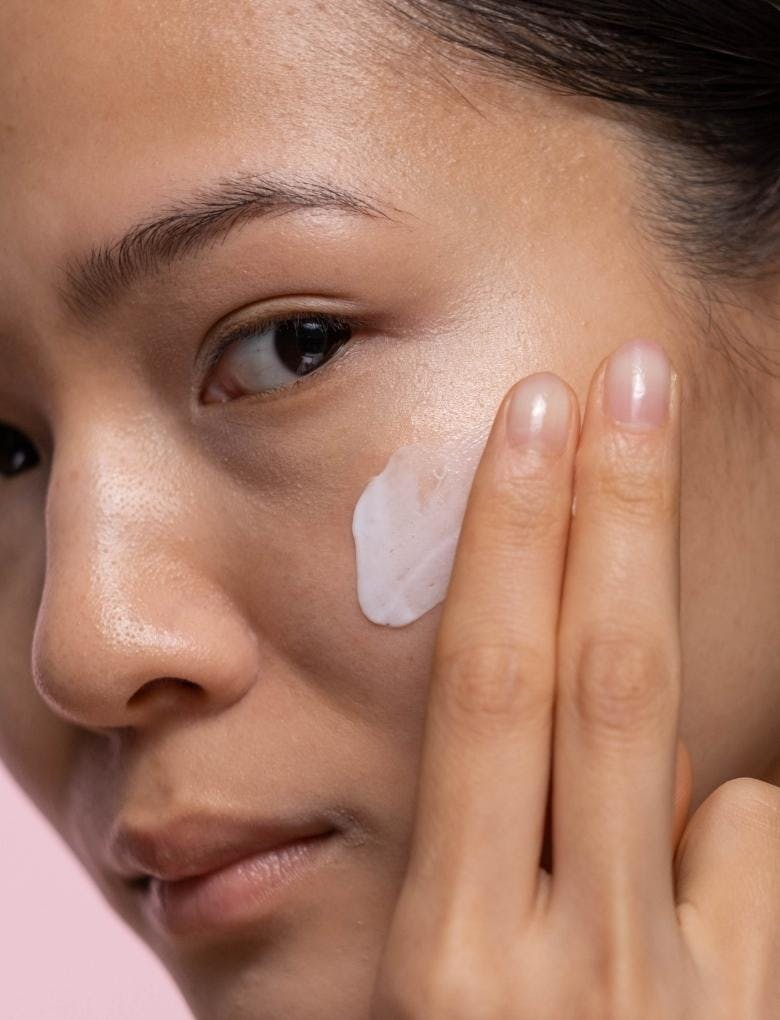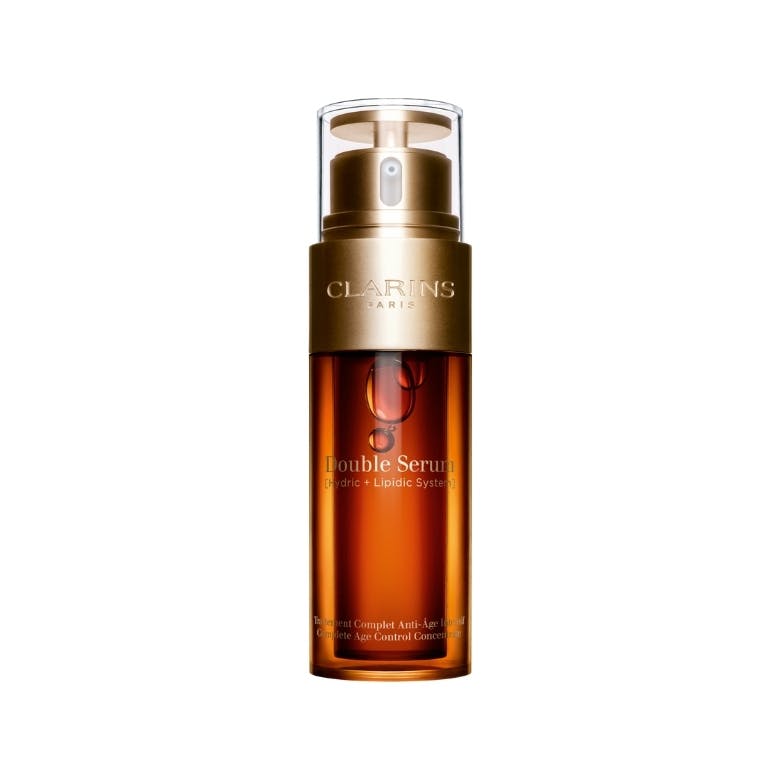Have Dry Skin? Here’s How To Care For This Skin Type
6 minutes read
There are four main skin types: normal, dry, oily and combination. Of these, dry skin is the type that doesn’t produce as much sebum (oil) as normal or oily skin. As a result, it struggles to retain moisture.
But dryness can also be a fleeting condition (‘fleeting’ only if cared for correctly, of course) caused by a variety of factors. Ideally, your everyday skincare routine should cater to both your skin type as well as your skin conditions.
So, how can you tell if your skin is dry? Let’s find out.
Is your skin dry?
This skin type doesn’t absorb skincare products as easily as other skin types. Pores tend to appear smaller too. You may notice flaking, itchiness or sensitivity.
If these are signs you notice year-round, you probably have a dry skin type. However, if you find that dryness makes an appearance only during the colder months, you may be facing a spell of dehydration.
When the humidity levels in the air are low (and when the heating is on full blast), it can cause a loss of moisture from the skin. This can be worse if you already have a dry skin type. “If someone has naturally dry skin, it might feel even drier in winter because it is dry skin combined with dehydration,” says Clarins Training Manager Charlotte McHale.
Read: How to differentiate between dry and dehydrated skin
So, how can you tell if you have a dry skin type? Try this: cleanse your skin to remove any make-up or skincare that you may have applied and then pat dry. Refrain from using any products and let your skin rest for about 30 minutes. Then, observe how it looks and feels. If you have dry skin, it may feel slightly tight and uncomfortable. You will also notice that it looks completely shine-free.
If you’re still unsure, you can also take this quiz to find out or get in touch with a Clarins expert through a virtual consultation.

What causes dry skin?
“This skin type lacks both moisture and lipids,” says McHale. Lipids refer to the skin’s natural fats that give it bounce and resilience.
Some of us are just born with this skin type. But there are varying degrees of it, and more severe dryness can have various causes. The most common causes include:
Genetics
If your dryness is severe, it could be a skin condition that’s genetically passed down. For instance, atopic dermatitis, the most common form of eczema, can be caused by an interaction of genetic and environmental factors.
Similarly, psoriasis (that affects around 2% of people in the UK) is also a condition that runs in families. The NHS states that “many different genes are linked to the development of psoriasis, and it’s likely that different combinations of genes may make people more vulnerable to the condition.”
Age
As we age, our skin naturally produces less and less sebum. According to the American Academy of Dermatology, “by your 40s, the amount of sebum your body makes drops dramatically. After 40, the amount of sebum your skin contains continues to drop.”
Medication
Dryness could also be a side effect of certain types of medication like statins that help lower the level of LDL cholesterol in the blood. According to Harvard Medical School, these drugs affect the lipids in the skin, which may cause it to feel drier than usual.
Similarly, isotretinoin (commonly known as Accutane) that is an acne medication could leave you with a dry skin and a dry mouth.
Health conditions
Certain conditions like diabetes, thyroid disease or kidney disease could also be the cause.
Excessive cleansing
Enjoy that squeaky clean feeling after washing your face? That doesn’t help your skin. In the conquest for clean skin, many end up cleansing so vigorously that they strip the natural oils from their skin. Harsh foaming soaps are typically the culprits.
Caring for dry skin: the skincare routine you need
How you care for your dry skin depends on how it affects you. If it isn’t causing any other issues like flaking or sensitivity, it’s just about maintenance.
On the other hand, if there are other symptoms to tackle, design your routine accordingly. Here’s what you should know:
Cleanse gently
In terms of cleansers, look for nourishing formulas and avoid anything that strips the moisture from the skin. Balmy, soap-free are ideal.
Try: The Soothing Gentle Foaming Cleanser is soap- and SLS-free. Instead, it employs a blend of plant extracts to gently remove impurities and leaves skin feeling soft and comfortable post-cleanse.
Look for richer textures
To make your moisturiser suitable for your skin, its texture matters. Rich, creamy textures are ideal for this skin type. For instance, the Hydra Essentiel Rich Cream contains kalanchoe extract, which is great for dehydrated skin. But its thick balmy texture makes it ideally suited for dry skin types.
When it comes to other skincare steps, too (toner, serum, SPF, etc.), look for formulas that cater to dry skin. Again, you should be able to find this information on the packaging of most products. For instance, the Hydrating Toning Lotion and the Hydra-Essentiel Bi-phase Serum are specifically formulated for this skin type.
Battle signs of pre-mature ageing
“If you have dry skin, you will probably see signs of pre-mature ageing sooner than someone with oily skin,” explains McHale. “That’s because oily skin tends to be naturally protected from external aggressors. So, I would recommend using a serum that targets signs of premature ageing.”
Try: Double Serum is packed with 21 active plant extracts – together, they fight major signs of skin-ageing.

Don’t forget to exfoliate
Dry skin renews cells more slowly than other skin types. So, they need to exfoliate more often. “Exfoliation encourages the skin renewal process,” explains McHale. “The standard is about twice a week. You could step it up if you have other symptoms such as flaking, or step it down if you were perhaps more sensitive.”
Don’t exfoliate too vigorously – that’s a bad idea for any skin type, but particularly for dry skin that can be quite sensitive.
Tackle other dry skin related woes
After taking care of basic skin maintenance, think about the individual aspects of your dry skin that may need resolving. For example, it could be sensitivity, pigmentation, flaking etc.
“Flaky patches are a common sign of dry skin,” says McHale. “Try layering up your skincare at night: apply a serum, followed by a cream. You could even add a couple of drops of facial oil to your cream to make it richer.”
On the other hand, if you’re suffering from a sudden bout of extreme dryness, we recommend reaching for a healing balm like the Calm-Essentiel Soothing Repairing Balm that you can use on the face or body to soothe and repair extremely dry skin.
If you’re suffering from a more serious condition like eczema or psoriasis, we recommend consulting a dermatologist before reaching for any products.
Next read: Everything You Need To Know About Skin Microbiome
Sign up for our newsletter
We will keep you in the loop for special offers, exclusive gifts and product news.

